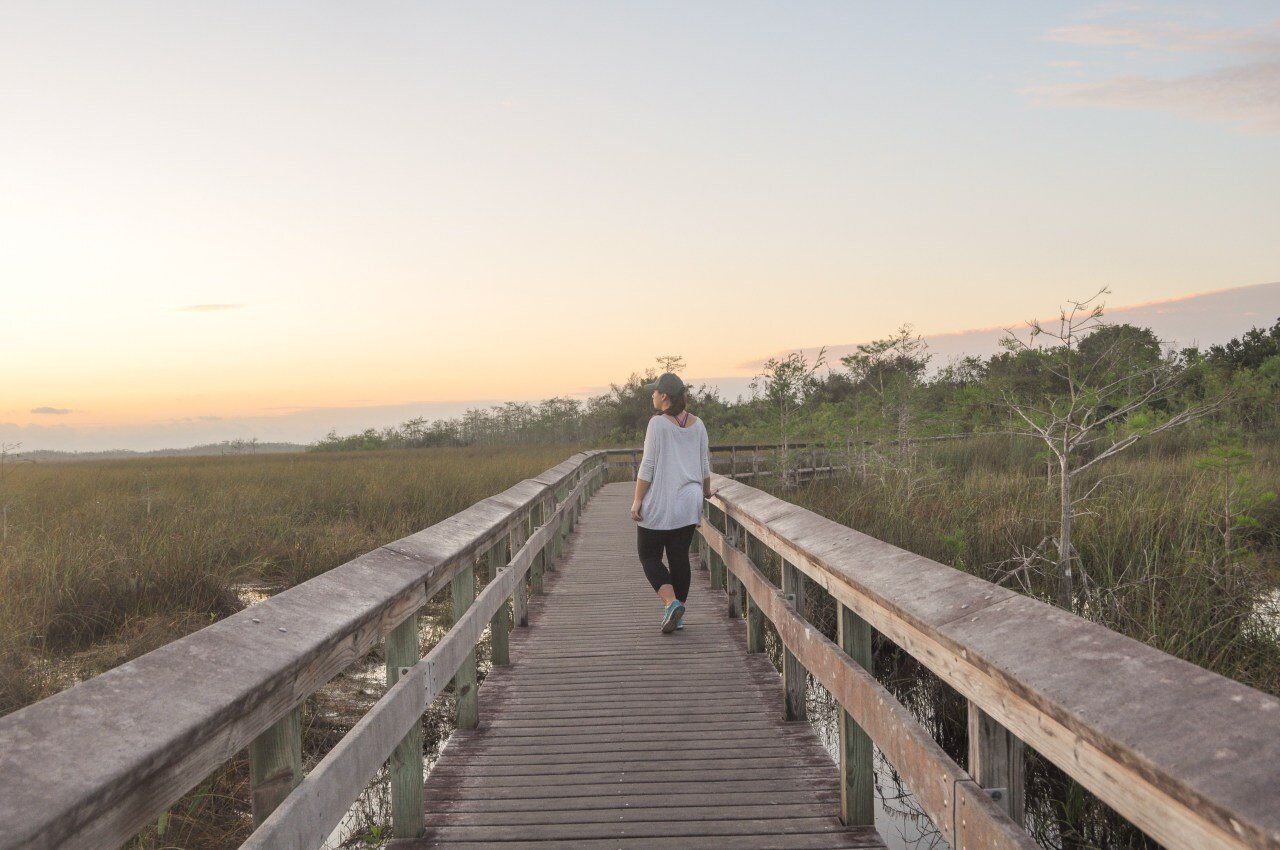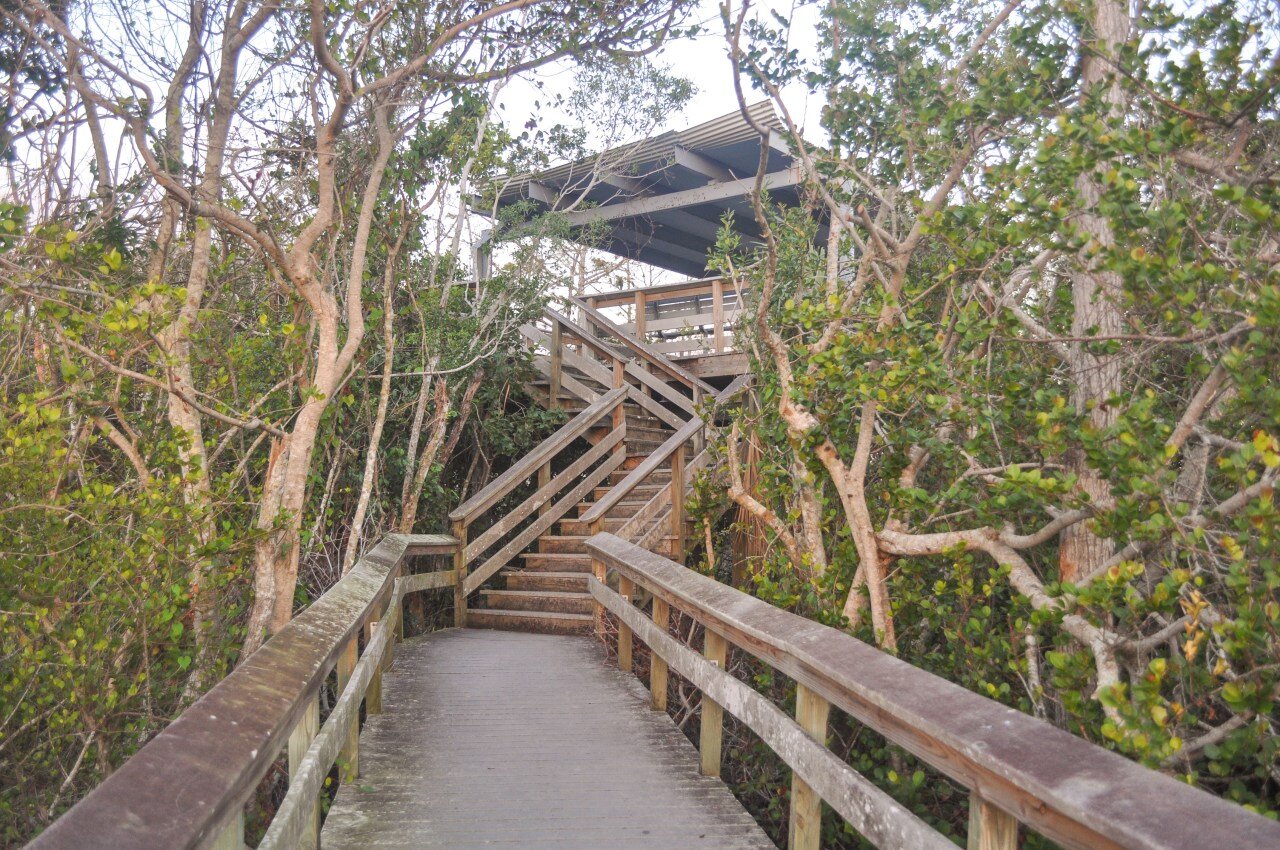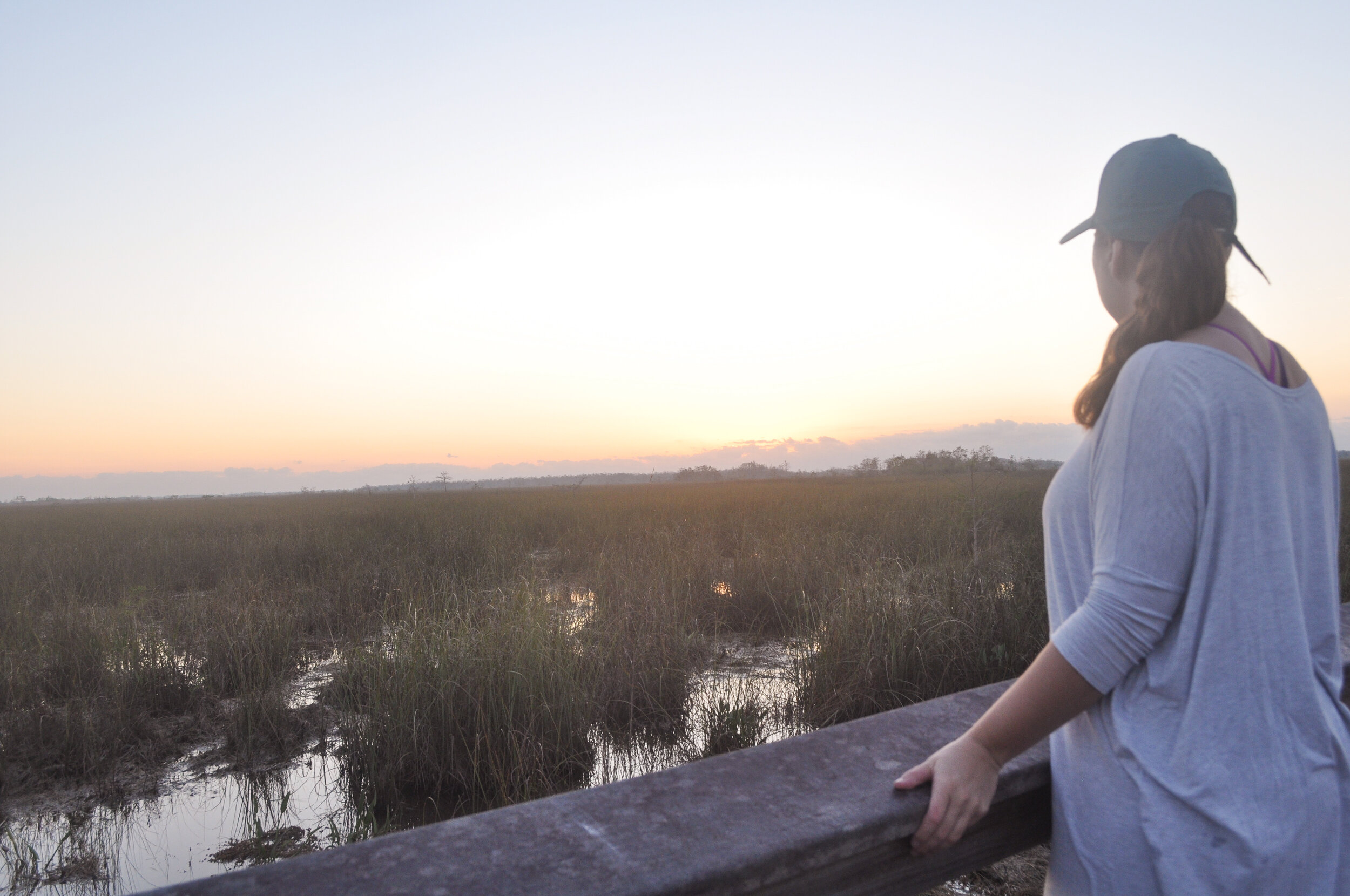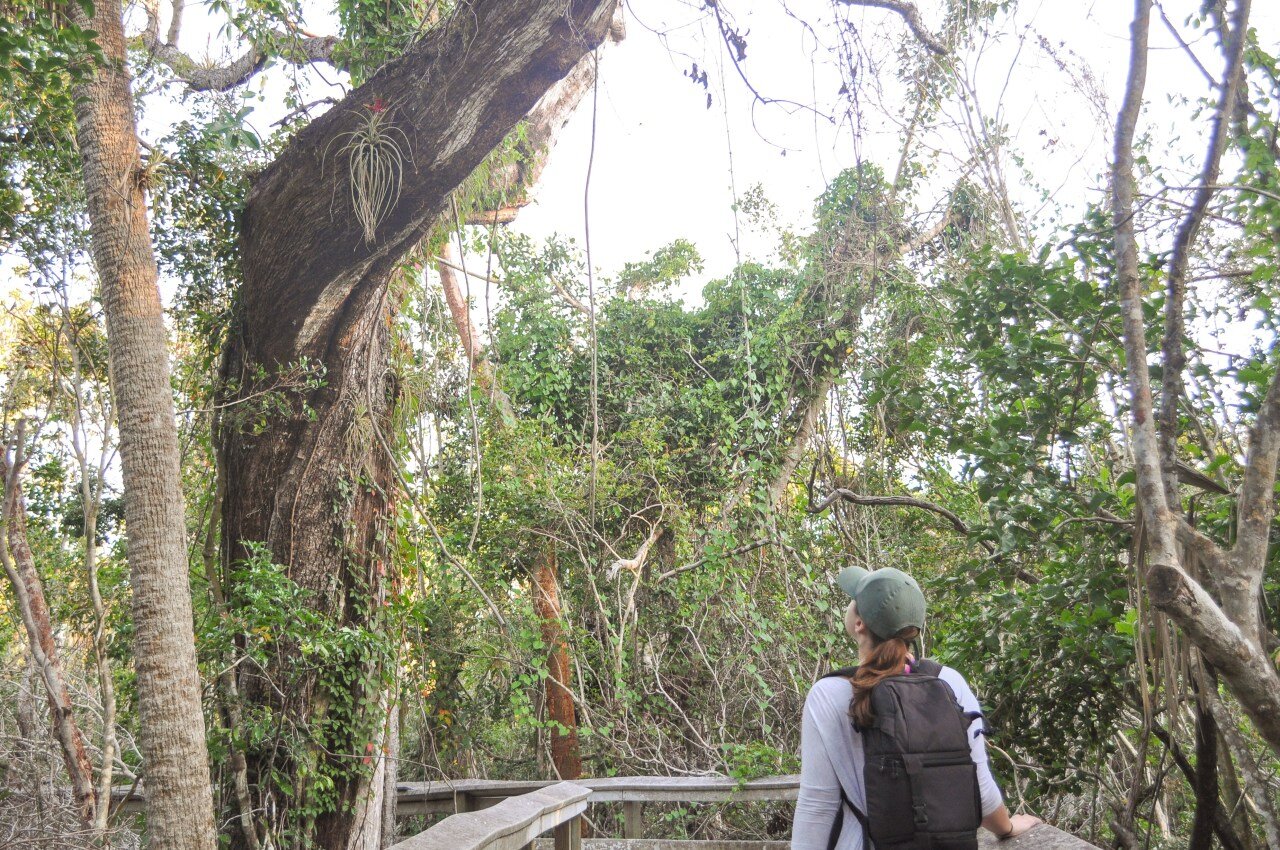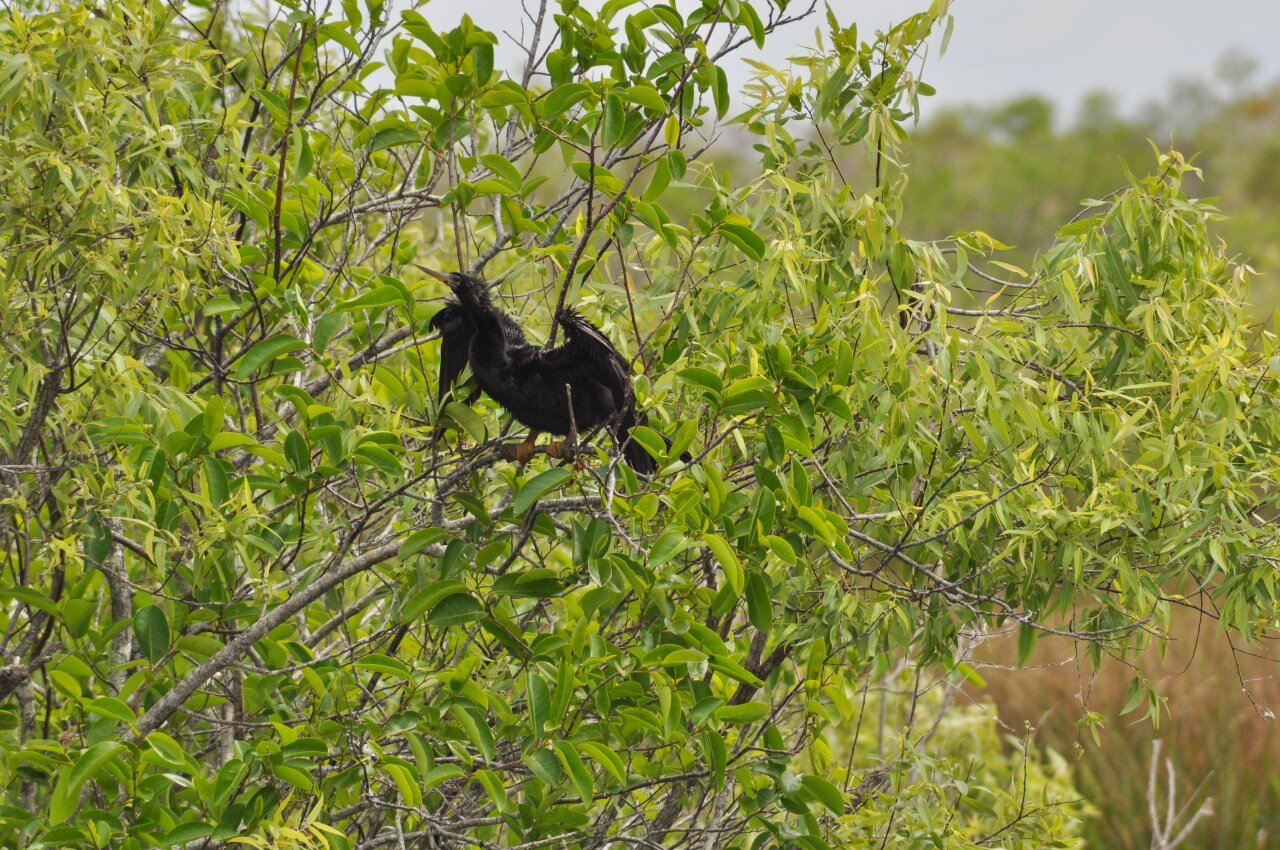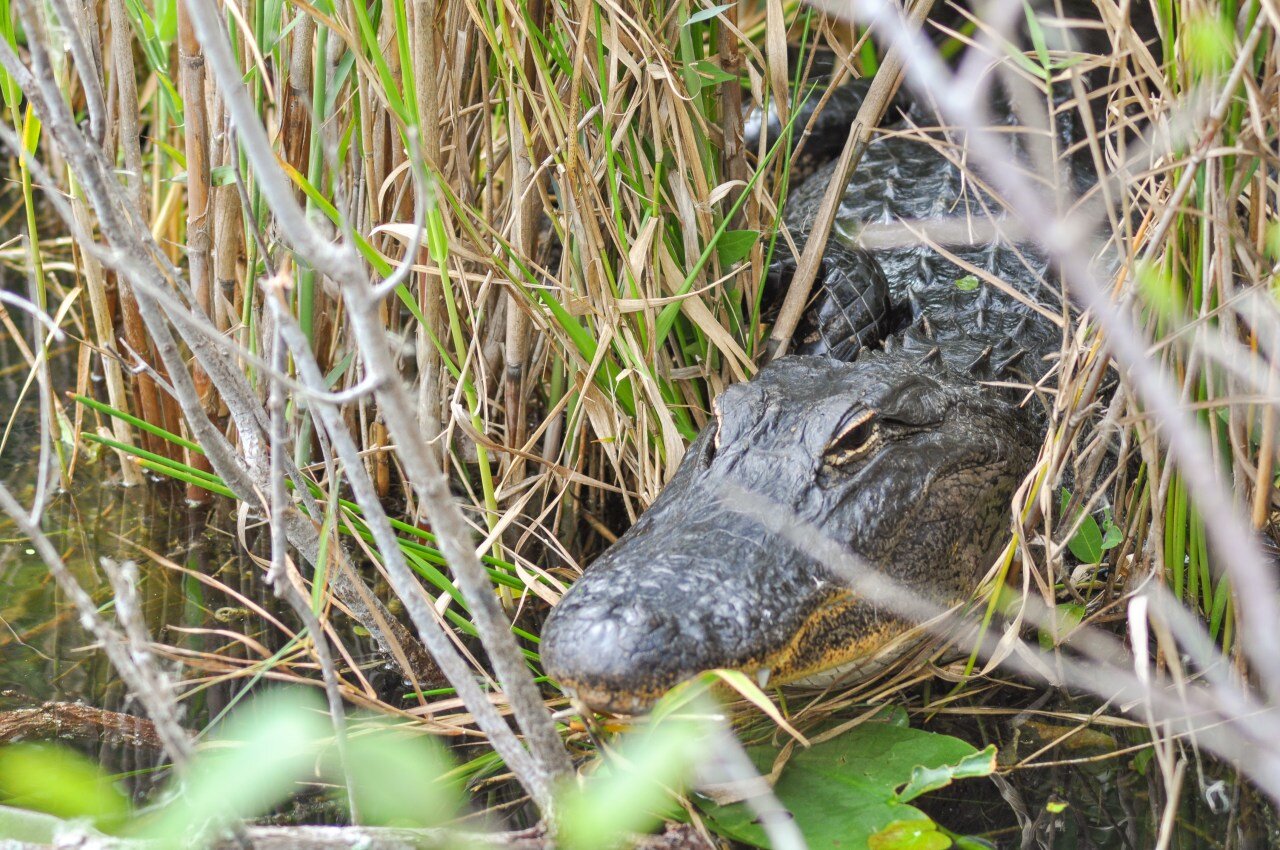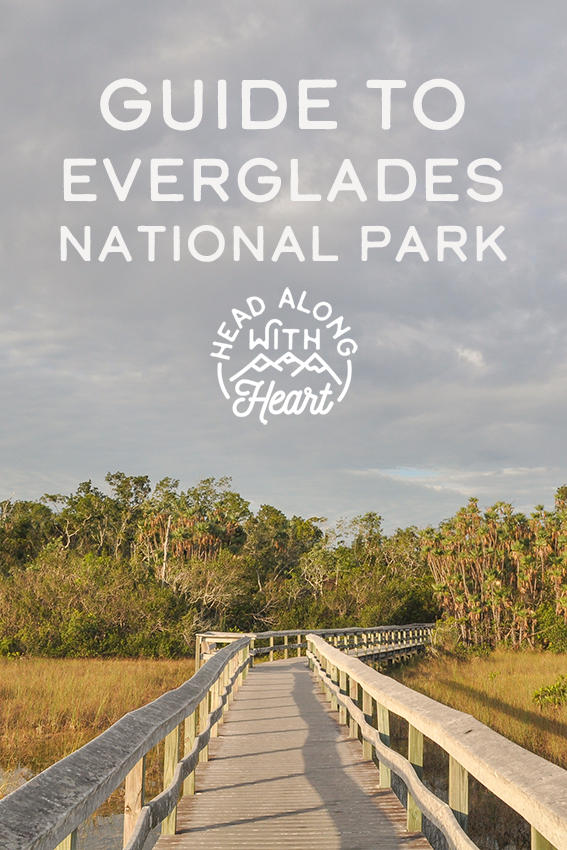How to See Everglades National Park Without Getting on a Boat
I rolled over in my warm cocoon. The stars were still bright over the towering canopy of pines, uninhibited by the thriving city lights somewhere north of me. Even though the sky hadn’t yet begun to lighten, it was time to begin my day. With one of America’s largest national parks to explore and only half a day to do it, I packed up my campsite and hit the road.
At first glance, Everglades National Park is basically a giant swampy wetland, but a closer look reveals a surprisingly diverse array of wilderness. When the park was first protected in 1934, it set a precedent as the first national park in the system to be established in order to benefit the abundance of life within it rather than for the scenic views it boasts. Even in my short amount of time, I was able to scratch the surface of these different ecosystems and get a glimpse of their inhabitants!
Why I Chose Not to Get on a Boat
There were a lot of factors that influenced my decision to keep my feet planted on dry ground while in Everglades National Park. First, I only had about two weeks to plan my weeklong trip to south Florida. Knowing that Dry Tortugas National Park would be the toughest to book, I started there and planned the rest of the trip around it. I gave myself most of this first day in the park, but, had I chosen a boat tour, I wouldn’t have had any time left to see any other part of the park… and that’s assuming that I could find a boat tour to join in the first place. The park is still recovering from the damage caused by Hurricane Irma, so some of the visitors centers aren’t quite fully functioning or offering a full range of programs (disclaimer: this was as of March 2018, and there were still plenty of options). Lots of third parties offer things like airboat rides, but these didn’t really seem like my style, and also aren’t allowed within the park boundaries.
And my last option would have been to rent a kayak and just go, but as a solo traveler and novice adventurer, this didn’t seem very safe. I’m sure a boat tour of some kind that suits my needs exists, but with limited time in the park as well as limit time to research, I decided to stay on land for my Everglades adventure.
The Pahayokee Overlook
I pulled into an empty parking lot at the Pahayokee Overlook. This boardwalk is only 0.16 miles round trip and hardly qualifies as a trail, but it’s a great place to view the quintessential Everglades “River of Grass.” I arrived as early as possible, and was rewarded with a beautiful sunrise all to myself. Well, all to myself if you don’t count the birds! I only saw a few of them, but they greeted me with a variety of different calls, singing their morning songs. The name “Pahayokee” is the indigenous name for the Everglades, meaning “grassy river,” before the Europeans moved in and renamed it (ever-glades, aka grass that goes on forever). Marjory Stoneman Douglas usually gets credit for coining the term “river of grass,” but the Seminole tribe are the true hipsters in this story #diditfirst. Douglas’ real achievement, though, was using the phrase to re-wire the common perspective surrounding the ‘Glades at the time of the parks’ inception from marshy wasteland to marshy wonderland, but I digress.
If you are traveling Everglades National Park without a boat, like me, I would encourage you to drive a little farther than Royal Palm (right at the park entrance) to this overlook. I spent some time here snapping photos, eating breakfast, and waking up, all while enjoying the serenity of the Pahayokee!
Mahogany Hammock Trail
Back on the road, I continued south (away from the park entrance) to my next stop of the morning. The trail at Mahogany Hammock is a bit more robust that Pahayokee, but not by much. At 0.5 miles, this boardwalk winds through one of the many hardwood hammocks found in the Everglades, which is essentially a tree island. The foliage here is extremely dense, giving the trail a jungle-y feel that contrasts the wide-open marsh around it (showcased by the Pahayokee Overlook). With a few inches of elevation gain, the hammocks are less likely to flood than the rest of the park, and served as a hideout for Native Americans when hurricanes rolled in—a thought that I have had a hard time wrapping my mind around!
The Mahogany Hammock in particular is known for being the home of the largest living mahogany tree in the United States, but my personal favorite part of the walk was all the air plants! Shaded by the thick canopy of trees, I saw all kinds of ferns and air plants within the branches.
This trail is deemed “heavily trafficked” by various Internet sources, but I was still yet to see another human being. I was starting to think that maybe Everglades National Park was my secret slice of adventure.
Flamingo
While the Pahayokee Overlook and Mahogany Hammock Trail are both worth a visit in and of themselves, they are also a great way to break up the drive to Flamingo. The Flamingo visitor center is pink like it’s namesake, and was undergoing construction during my visit (March 2018). Sitting right on the Florida Bay, the dock is the main draw of this area of the park for many people. Without a specific trail/activity in mind, I went inside to get some inspiration from the people who know best—the park rangers!
It was right around 8am, and I got the feeling that I was their first visitor of the day. The park ranger at the desk was happy to chat with me, and enthusiastically suggested way too much for me to see in one day! I took him up on one activity, though, and it turned out to be one of the highlights of my entire trip.
He advised that there was a drain hole in the sea wall directly behind the visitor center where the manatees like to hang out and slurp the freshwater from the drain. So I headed around to the wall, prepared to set up camp and wait a while… when I looked down and my heart skipped a beat. It was as if my new manatee friend had been waiting for my arrival. With the bay tours cancelled because of the hurricane I had considered not driving all the way to Flamingo, but I am so profoundly happy that I changed my mind.
It turned out that there was a whole herd of manatees in the dock area, just visible every few minutes when they cam up for air. At my secret spot by the wall, however, they would lift up their heads above the water to get a drink! Not only was I so excited for my first glimpse of the gentle creatures in real life, but I also still can’t believe how up close and personal of a moment I got to share with them. No crowds, no guides—just me and my new manatee friend in the fresh morning air.
Royal Palm and the Anhinga Trail
It was still so early in the morning that I hadn’t concerned myself with a time constraint in Flamingo. Wanting to see as much of the park as I could without a boat, I stopped briefly at Paurotis Pond on my drive back toward the park entrance. One of the many, many ponds along the main road (good places for a canoe or kayaking trip), Paurotis Pond was recommended by the park ranger as a good place to view nesting birds. It definitely was, but unfortunately a little less exciting without binoculars.
The last stop of my visit was Royal Palm, just four miles from the park entrance. I had finally found the crowds. Now mid-morning, the parking lot was nearly full and swarming with tourists. I joined the masses myself, only slightly put off by the amount of people. I was bound to find other humans somewhere, and it made sense that they weren’t very deep into the park as the heat of the day set in.
The Anhinga Trail is paved at the beginning and quickly turns into a boardwalk. Still under a mile, this trail was my longest walk of the day at 0.8 miles. It follows along the Taylor Slough, a marshy river that never dries up, catering to the wildlife for which the Everglades is known. Besides the location of the trail, its popularity is also due to the fact that you are pretty much guaranteed to see some kind of animals here. I know I keep mentioning the birds, but… BIRDS! I was able to snap a photo of an anhinga and a great blue heron (and bring them home for the scientists in my life to identify). And of course, alligators. The crowds served one purpose on the Anhinga Trail—you don’t have to actually look for wildlife yourself if you don’t want to. For every alligator, you’ll find at least ten humans with cameras all pointed in the same direction!
I decided to skip the Gumbo Limbo trail (also accessible from the Royal Palm parking lot), since I had spent all my time with the manatees in Flamingo. On my way out of the park, I stopped by the Ernest F. Coe visitor center before starting toward the Overseas Highway.
More Things To Do in the Everglades sans Boat
I gave myself a very short timeframe in which to enjoy the park, but don’t be fooled! There is plenty to see and do in Everglades National Park without a boat. Here are a few of the things I was unable to make time for, but shouldn’t be overlooked if you are planning your own adventure!
Along with your search for manatees in Flamingo, keep an eye out for the crocodile that likes to hang out by the dam! I was so distracted by the manatees that I forgot to look for him, and therefore didn’t get to see a croc on my trip to south Florida.
The Pinelands Trail is another short walk (0.4 miles round trip) that winds through the Pine Rockland—yet another ecosystem in the ever-diverse Everglades. The Pine Rockland is a pine forest, and this trail is a great place to spot tree snails.
There is a network of trails that begin at the picnic area of Long Pine Key Campground. You can find information regarding these trails on the national park website, but since they are not listed on the park map, they are far less crowded.
Shark Valley is another popular section of the Everglades National Park, but is accessed from Tamiami Trail rather than Main Park Road. The Shark valley observation tower is seven miles from the visitor center, and can be accessed by bike or a tram ride. I was disappointed that I didn’t make it here, and will prioritize it on my next visit! This is the place to be if you couldn’t get enough of the gators in Royal Palm.
If you drive all the way to Shark Valley, you might as well make a day of it and stop in at Big Cypress National Preserve. The Oasis visitor center is worth a visit, and Big Cypress also maintains campgrounds along this roadway, which would give you better access to Shark Valley, Big Cypress, and the Gulf Coast area of the Everglades.
Join a ranger program! The Everglades is a great place for a good old nature walk, and if you’re feeling particularly daring, the offer a “slough slog,” allowing you to literally get down and dirty with the River of Grass.
Long Pine Key Campground
I stayed the night at Long Pine Key Campground, and I would highly recommend it. The sites were relatively spread out, the atmosphere laid back and quiet, and the bathrooms were so clean! It was my favorite campground from the whole trip.
As always, follow Leave No Trace principles when visiting anywhere in nature, but especially a protected park. Pack out what you pack in, don’t take any souvenirs you didn’t but in a gift shop, and PLEASE don’t feed wildlife!
I said goodbye to Everglades National Park in the early afternoon, sad to go but excited for what came next! You can read the full itinerary for my weeklong trip to south Florida and the national parks here.



